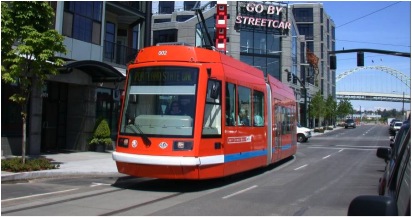Tomorrow night, President Obama will unveil his jobs plan before a skeptical Congress. It’s unclear how much of the $300 billion proposal will go to infrastructure, but the president has said that will be a centerpiece of the proposal. An infrastructure bank and a new version of the expired Build America Bonds program could also be on the agenda.

Given the GOP strategy of obstructing any stated goal of the administration, it’ll be a tough sell. Some Republicans have already made it clear they would rather see a $640 billion, 12-month payroll tax holiday. That would increase the deficit by more than twice what Obama’s plan would, but deficits don’t seem to matter as long as taxes are getting cut.
So it’s no surprise that the president is also looking for ways that he can spur infrastructure job creation without Congress’s approval. Last week, Obama pleaded with Congress to pass a clean extension of the transportation bill (a plea which some Republicans are gleefully denying). At the same time, he announced that he was directing some agencies to each identify three infrastructure projects that could use a little federal help in speeding up the process. Here’s what he said:
In keeping with a recommendation from my Jobs Council, today I’m directing certain federal agencies to identify high-priority infrastructure projects that can put people back to work. And these projects — these are projects that are already funded, and with some focused attention, we could expedite the permitting decisions and reviews necessary to get construction underway more quickly while still protecting safety, public health, and the environment.
He specifically called on the departments of agriculture, commerce, housing and urban development, interior and transportation to highlight three projects each. We were wondering whether this process will end up falling into some of the same traps as the stimulus, which emphasized shovel-readiness to the detriment of other evaluation criteria for new projects, like whether the money would be well-spent.
Though Obama didn’t use the phrase “shovel-ready” last week, he called for projects that are already funded and have state and local permits, which implies nearly the same thing. Without a new stimulus, which the Republicans have already promised to oppose, there is no money to fund new projects, making it imperative to find those that are already funded. Still, the president admitted last year that "there's no such thing as shovel-ready projects."
And despite the administration’s general friendliness toward transit and understanding of the limitations of the private automobile, 60 percent of transportation dollars in the stimulus went to highways, with just 20 percent to transit. (Most of the rest went to freight rail, with a little bit for aviation and maritime projects.)
Considering that politicians, including Obama, are looking to infrastructure as a job creator, they’d be wise to reassess those spending priorities. A Smart Growth America report earlier this year showed that stimulus-funded public transportation projects created 19,299 jobs per billion dollars spent, where the stimulus road projects created just 10,493 jobs for the same money.
“So any forthcoming jobs proposal, we would hope, would include proportionally more spending on public transportation projects or repair projects, rather than new construction of highways,” said SGA’s communications director, Alex Goldschmidt, “mainly because those are more effective at achieving the ends that the president has laid out.”
“New highway construction opens up states to huge financial liabilities," she added. "They are then tasked with maintaining these roads and keeping them in good condition, and a lot of states are already failing to do this.”
So what would be some cost-effective, pipelined transportation projects that could be advanced as part of Obama’s short-term jobs initiative and serve as smart long-term investments?
Detroit’s light rail project along the Woodward corridor would be one favorite. The plans for the 9.3-mile, 19-stop line are complete, and just last week, it got the green light from its environmental review. Private and city funds have already been committed, but they could use more federal funds to complete the project.
And Austin has a Strategic Mobility Plan to build a 16.5-mile urban rail line connecting the University of Texas, the international airport and neighborhoods in between. The city of Austin will put a bond measure on the ballot next November to fund it, and the city is working in partnership with the county and the Federal Transit Administration.
And Chicago’s Regional Transportation Authority recently 13 planning, operating and capital projects that are slotted to receive nearly $14 million in federal, local and RTA funds. The projects, according to the RTA, “will plan for and increase transit usage, provide multi-modal connections, improve the efficiency and effectiveness of local transit, improve access to jobs, and help increase mobility for its region’s seniors, people with disabilities and the general public.”
Advocates say road and bridge repair, as well as public transit, is a good use of funds that also creates more jobs than construction and helps states address their financial burdens, rather than create new ones.





